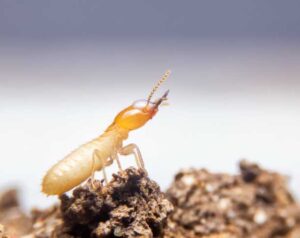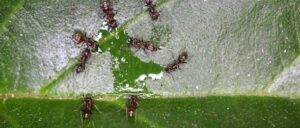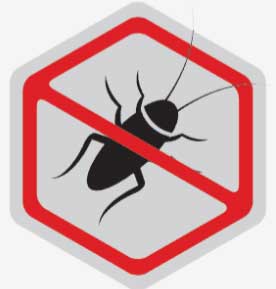How to Identify Cucumber Beetles
Striped Cucumber Beetle
The striped cucumber beetle is a small, yellow and black striped beetle that measures 3/8 of an inch in length. It is a major pest of cucurbits (cucumbers, squash, melons, etc.) as both the adult and larval stages feed on the foliage and fruits of these plants. The adult beetles also spread a disease called cucumber mosaic virus. Control of this pest can be achieved by using row covers, maintaining a clean garden, removing crop debris at the end of the season, and using insecticides if necessary.
The Striped Cucumber Beetle (Acalymma vittatum) is a species of beetle found in North America. The larvae of this species are small white grubs that feed on the roots of cucumber, squash, and other plants in the Cucurbitaceae family. They are found in soil near the base of the plants and can be identified by their white color and curved shape.
Spotted Cucumber Beetle
The spotted cucumber beetle (Diabrotica undecimpunctata) is a destructive garden pest that can cause serious damage to cucurbits and other crops. It is native to North America and has been found in Canada, Mexico and the United States. The adult beetle is yellow-green in color with 12 black spots on its back. The larvae are white grubs with brown heads and can cause significant damage to plants. The spotted cucumber beetle can transmit bacterial wilt, which can cause wilting, yellowing and death of plants. To control this pest, hand-picking and trapping can be used, as well as spraying insecticides.
Plant Damage
The cucumber beetle is a common pest of cucurbit crops, including cucumbers, squash, pumpkins, and melons. The adult beetle feeds on the leaves and flowers of plants, leaving behind ragged, lacy holes. The larvae feed on the roots of the plants, causing stunted growth and wilting. Controlling cucumber beetle populations is important to prevent significant damage to plants. Cultural controls such as crop rotation, row covers, and hand-picking of adults can be effective in reducing infestations. Chemical controls such as insecticides can also be used but should be used as a last resort.
How to Get Rid of Cucumber Beetles
STEP 1: Sow your cucumbers late outdoors or start them early indoors.
Outdoors: If you are sowing cucumbers outdoors, you should wait until the soil has warmed to at least 65°F (18°C), which is usually reached in mid- to late-May in most regions. Plant the seeds 1 inch (2.5 cm) deep in a sunny spot with well-draining soil. Space the seeds 2 to 3 feet (60 to 90 cm) apart and keep the soil moist until the seeds germinate.
Indoors: If you want to get a head start on the growing season, you can start cucumbers indoors 4 to 6 weeks before your last frost date. Use biodegradable pots filled with a quality potting mix and plant 2 or 3 seeds per pot. Place the pots in a warm spot with indirect sunlight and keep the soil moist. Once the seedlings have grown 3 to 4 inches (7.5 to 10 cm) tall, you can transplant them outdoors.
STEP 2: Place beetle traps or trap crops around your plot’s edges.
Beetle traps are an effective method for controlling pests in the garden. Beetle traps use pheromones to attract adult beetles, trapping them in a container filled with soapy water. Trap crops are plants that are highly attractive to certain pests and can be used to attract them away from the main crop plants in your garden. These trap crops can then be removed and destroyed, eliminating the pests. Both of these methods are effective in keeping beetle populations at bay.
STEP 3: Apply beneficial nematodes or purchase plants that attract beneficial insects.
Beneficial nematodes are microscopic worms that can be used as a natural form of pest control. They can be purchased online or at garden centers and applied to the soil or foliage of plants. Beneficial nematodes can control a wide variety of pests, including fleas, root-knot nematodes, grubs, wireworms, thrips, and fungus gnats.
Another option is to purchase plants that attract beneficial insects. These insects act as natural predators to pests and can help keep the pest population under control. Examples of plants that attract beneficial insects include daisies, dill, fennel, yarrow, and clover. Additionally, planting a variety of flowering plants will provide beneficial insects with a variety of nectar sources.
STEP 4: Mulch young cucumber plants with silver reflective mulch or straw.
Silver reflective mulch or straw can be beneficial to young cucumber plants because it helps to reflect sunlight away from the foliage, reducing the risk of sunscald. It also helps to keep moisture in the soil and suppress weeds. Additionally, it can also help to keep the soil temperature more uniform, reducing the risk of stress and increasing yields.
STEP 5: Cover cucumber plants with row cover until they begin blooming.
Row cover is an effective way to protect cucumber plants from cold temperatures, pests, and other environmental factors. It should be applied as soon as the plants are in the ground and removed once the plants begin to bloom. Before applying the row cover, make sure that the plants are well-watered and the soil is not too wet or dry. Make sure that the row cover is securely anchored around the edges of the bed, and check regularly to make sure it is still in place.
Ways to Prevent a Cucumber Beetle Infestation
1. Remove weeds and garden debris: Cucumber beetles are attracted to moist, shady areas, so removing weeds and other debris will help reduce the number of potential breeding sites.
2. Plant-resistant varieties: Plant varieties of cucumber that are resistant to cucumber beetle damage, such as ‘Marketmore 76’ and ‘Straight 8’.
3. Use row covers: Row covers can be used to physically prevent cucumber beetles from reaching the plants.
4. Use insecticidal soap: Insecticidal soaps can be used to kill cucumber beetles on contact.
5. Use insecticides: Insecticides such as carbaryl, permethrin, and bifenthrin can be used to kill cucumber beetles. Make sure to follow the instructions on the label for proper application.
6. Use trap crops: Trap crops such as radishes and nasturtiums can be used to attract cucumber beetles away from the cucumber plants.
7. Use beneficial nematodes: Beneficial nematodes can be applied to the soil to reduce cucumber beetle larvae populations.
TAGS: how to | pests
Rest Easy Tonight
We’ll get rid of your pests safely, effectively, and immediately.
CALL NOW FOR YOUR FREE ESTIMATE – (301) 613-6570
 Reality: Silver Spring MD Termite Prevention Tips Explained. Contact MTB Pest Control today. (301) 613-6570 or (301) 449-2937.Termite queens indeed have an impressive lifespan and are often the oldest members of their colonies. These queens can live anywhere from 25 to 50 years, with their egg production reaching its peak for up to a decade. Should the queen perish and stop emitting the pheromones that inhibit the development of other reproductive termites, a new queen will emerge within the colony.
Reality: Silver Spring MD Termite Prevention Tips Explained. Contact MTB Pest Control today. (301) 613-6570 or (301) 449-2937.Termite queens indeed have an impressive lifespan and are often the oldest members of their colonies. These queens can live anywhere from 25 to 50 years, with their egg production reaching its peak for up to a decade. Should the queen perish and stop emitting the pheromones that inhibit the development of other reproductive termites, a new queen will emerge within the colony.
 When it comes to Termites VS Flying Ants in DC or Northern Virgina, many homeowners first notice a swarm of flying insects. But not all flying insects are termites – some are flying ants. Northern Virgina
When it comes to Termites VS Flying Ants in DC or Northern Virgina, many homeowners first notice a swarm of flying insects. But not all flying insects are termites – some are flying ants. Northern Virgina 

